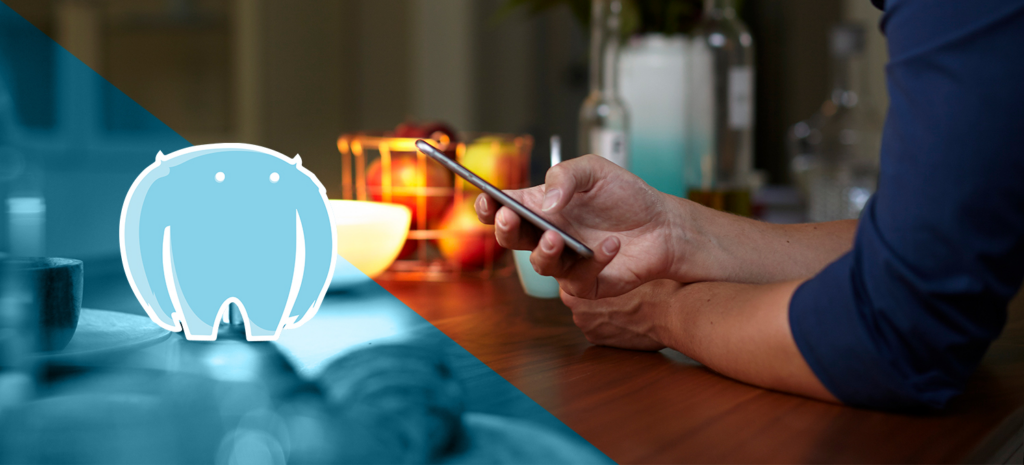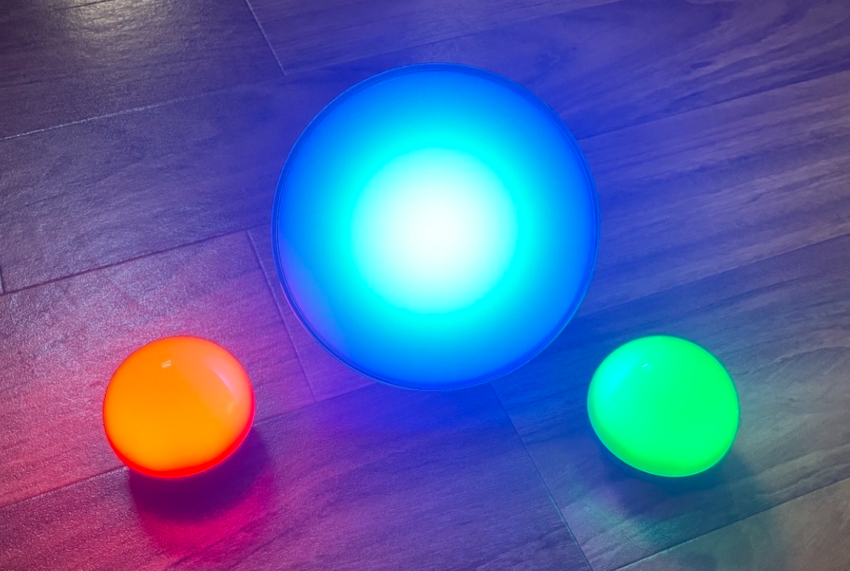Portable table lights are useful. In our practical test, the Philips Hue Go faces two Olight Obulb Pro Bluetooth lights with group feature. Both solutions are intriguing despite unforeseen drawbacks.
Beautiful battery-powered lights. Rooms may be lighted with ambient light or adorned with lovely lights on the balcony or BBQ in the evening, regardless of situation. Battery-powered lights are big business. A professional market exists alongside the private sector, dominated by unknown producers. Restaurants buy battery-operated table lighting.
This notebook review used a lantern-like illumination setup. The Olight Obulb Pro (58 mm height, 65 mm diameter, 105 grams/~2.3 x ~2.6 inches and ~3.7 oz) is not a flashlight or table lamp. These may be arranged and mounted using magnets or accessories. They faced Philips’ outdated Hue Go lamp*.
Both cost 50–60 Euros (~$54–$65, street pricing). The bundle is double the price because we got two Olight Obulb Pros for testing. Distribution route affects pricing. Olight sells Obulbs at steep savings. Most importantly, you can buy lanterns without charging cables. Amazon simplifies the Obulb Pro offer.
Olight sold Notebookcheck the Obulbs. One Halloween kit featured a “costume/cover” but no charging wire. Standard units came with charging cables.

Olight magnetic cable
However, specialized charging cords reduce duplicates. A spherical magnetic connector with a USB-A socket charges the lanterns. MCC, a practical connecting wire that helps lights reach IPX7, is familiar to Olight users.
The connector’s biggest drawback: losing the cord disables light charging. If the maker folds, you have a greater issue.
Philips’ battery-operated Hue light doesn’t. Charging requires a barrel connection. If in doubt, the aftermarket has this if the voltage and amperage are correct.
Illuminate a room.
Obulbs excel at illuminating. The lanterns cannot illuminate a room without the app, but they make great mood lights and allow for imaginative configurations. Orbs also endure several days. We tried different light colors and alternate play. Most recent two days.
But, the alternate play, whether flowing color changes or powerful steps, is unpleasantly chaotic. Unfortunately, colors change too fast.
Obulbs should be placed near room lights at maximum brightness. Home emergency lights with magnets stick to the fridge. Metal-heavy ceiling lights make good bases. Magnets fasten hanging and side-mounted.
Funny Halloween kit. It has a rubber cover to hang the light like a ghost without magnets.
Olight’s colors aren’t great.
Sphere colors are unconvincing. The diffuser above the sphere hides the LEDs, although some shade is visible inside the sphere. Red and green also seem dirty. Unlike the tiny Fenix CL09, which produces crisp colors. This cannot be photographed. Smartphone cameras often display incorrect colors. Nikon Z50s improve this little. Our Apple TV and Homepod Mini hotel test includes CL09 images.
Nonetheless, the Obulbs look great in smartphone and Nikon Z50 cameras. Television also have similar impact. Correctly displaying automobile brake lights is still difficult. HDR hasn’t altered that.
Philips Hue Go outperforms here, but differently. Colors are scarce. Hue Go’s yellow isn’t obvious. Blue seems feeble. Side LEDs also bother. Cozy Candle mode is Hue Go’s highlight. This inadvertently mimics candlelight flickering. Home Zigbee systems may also incorporate the light. Obulb Pro can’t do that. We won’t discuss Hue’s great app.
Interesting app control.
This is unique to the Obulb. Self-sufficient tiny lights seldom have app control. The app has several peculiarities. Pairing is straightforward, but operation may be frustrating.
Specially, a QR code can transmit the pairing to another smartphone. We transferred control from an iPhone 12 to an iPhone SE without re-pairing. Following that, both cellphones acted as Bluetooth controls—remote control is impossible.
The app controls lantern brightness and color after pairing. Groups may also turn the lamps on and off. The app cannot set light color and brightness for all lights. Group activation loads each light’s last state.
The ideal light concert is lost. Group function seems unplanned. The app sometimes fails to connect to the lights. Manually activate the lamps first. We think Bluetooth becomes inactive.
Top 10 Laptops
Budget multimedia, gaming, lightweight gaming, business, budget office, workstation, subnotebooks, ultrabooks, chromebooks
300, 500, 1,000, University Students, Finest Exhibits
Smartphones, Phablets, 6-inch, Camera Smartphones
Annoying during travel
Olight has neglected transport situations. Switching is the worst. Pushing a big surface activates the lamp. The issue: Bags/backpacks readily do this. A tiny bump is plenty. The lanterns’ lockdown mode (push and hold the button) doesn’t mean they won’t accidentally turn off in your backpack. The lanterns lack an on/off sliding switch. Despite the price, there is no travel bag. A travel bag would also safeguard the scratch-prone spherical.
Philips’ recessed switch is superior. This reduces the chance of backpack activation by mistake. Philips Hue Go is too bulky to travel.
High self-discharge, good runtimes
Little Olight lanterns operate well. Several days on low are OK. Olight says maximum 85 hours. We repeatedly confirmed two full days. Brightening briefly has little effect either. The app estimates runtime accurately. At full brightness, two hours are possible. Instead of having it on the table, attach it someplace else since the light is blinding.
Problematic self-discharge. We found numerous lanterns empty or almost empty after a week during the test. Too awful.
Despite size, Philips runtimes are much lower. The Hue Go ends after one night. Therefore, the Hue Go is unusable for days. The manufacturer claims a maximum runtime of 18.5 hours, or an evening. Only Cozy Candle setting or low brightness allows this. Philips claims 2.5 hours under different light conditions. In practice, less authority is more. Hue Go self-discharged. We didn’t consider it since it’s less mobile-friendly. As it must be recharged daily, the Hue Go is usually plugged in. Anything else is illogical.
Conclusion
Choosing between two solutions for 50 Euros (~$54) is difficult. The Philips Hue Go is the greatest mood lighting option since it spreads light across a larger area. Light is amazing. Philips also implemented subtle flickering well. The Hue Go is a better buy for a home light rarely used on the road.
The Olight Obulb Pro is superior for emergency illumination and trip planning. To prevent the light from turning on when traveling, acquire a case. Though small, the strong light costs 40 to 50 Euros (~$43 to $54). Compared to the more powerful Philips Hue Go, the recommended retail price of 60 Euros (~$65) is too high.
You may bring lots of them—two is great. They brighten hotel rooms attractively. We threw 12 globes into a pool during the test. We resisted this temptation, which might damage you, without a Notebookcheck test swimming pool.
The manufacturer’s advertising is likewise devious. Advertising employ dozens of lanterns to highlight how entertaining it is, especially for kids. Don’t show kids the manufacturer’s products. Due to the app’s group function flaws, it might create arguments and disillusionment. Try two lanterns before buying more to determine whether it’s worth the trouble.
App issues are minor when used alone. Unfortunately, the app is required for many activities and becomes bothersome with numerous lanterns owing to dependability difficulties. The Obulb’s high self-discharge limits its use as an emergency light. It cannot be ignored.

